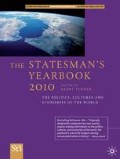Abstract
Archaeological evidence indicates that in the 3rd millennium BC a culture known as Umm al-Nar developed in modern-day Abu Dhabi, its influence spreading inland and along the coast of Oman to the south. There was trade with both the Mesopotamian civilization and the Indus culture, particularly the export of copper (then the most valuable natural resource) from the Hajar mountains. Later settlements, with Hellenistic features and dating from between the 3rd century BC and the 3rd century AD, have been discovered at Meleiha, near the Sharjah coast, and at Al-Dur in the emirate of Umm al Qaiwain. There are indications that the coastal areas of the United Arab Emirates (UAE) and Oman came under Sassanian (Persian) influence from the 4th century AD until the early 7th century when the Islamic era began. After the death of the Prophet Muhammad, tribes in the Dibba region along the eastern coast rebelled before Islamic forces won a decisive battle in AD 632.
Preview
Unable to display preview. Download preview PDF.
Further Reading
Davidson, Christopher M., The United Arab Emirates: A Study in Survival. Lynne Rienner Publishers, Boulder, Colorado, 2005
Vine, P. and Al Abed, I., United Arab Emirates: A New Perspective. Trident Press, Naples, Florida, 2001
Editor information
Copyright information
© 2009 Palgrave Macmillan, a division of Macmillan Publishers Limited
About this chapter
Cite this chapter
Turner, B. (2009). United Arab Emirates. In: Turner, B. (eds) The Statesman’s Yearbook 2010. The Statesman’s Yearbook. Palgrave Macmillan, London. https://doi.org/10.1007/978-1-349-58632-5_291
Download citation
DOI: https://doi.org/10.1007/978-1-349-58632-5_291
Publisher Name: Palgrave Macmillan, London
Print ISBN: 978-0-230-20602-1
Online ISBN: 978-1-349-58632-5
eBook Packages: Palgrave Political & Intern. Studies CollectionPolitical Science and International Studies (R0)

